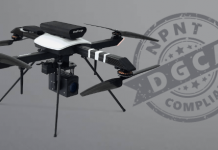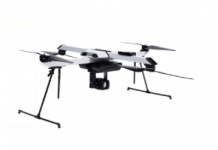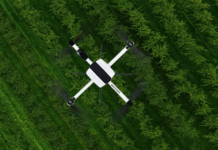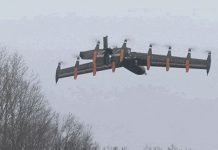The Marines’ New Drone-Killer Aces Its First Real World Testquality, durability and flight time. Here are the best.

Last Thursday, nearly a month after Iran shot a $220 million US drone out of the sky, the US Marine Corps took down an Iranian UAV of its own. But the significance lies less in heightened tensions in the region than it does in the weapon of choice. The strike marks the first reported successful use of the Light Marine Air Defense Integrated System, an energy weapon that blasts not artillery or lasers but radio signals.
According to remarks by President Donald Trump last week, the drone had come within 1,000 yards of the USS Boxer, an amphibious Navy assault ship, and ignored “multiple calls to stand down.” When the drone continued its approach, the Boxer turned to its LMADIS.
The LMADIS system comprises two all-terrain vehicles, called Polaris MRZRs. One serves as a command unit, while the other is outfitted with sensors and signal-jamming equipment. The sensor unit feeds information to a tablet on the command and control MRZR, from which an operator can track an incoming drone, get visual confirmation that it’s hostile, and disrupt communications between a drone and its home using a radio frequency blast.
“It’s not all that different from the drone zappers you can buy commercially,” says Bryan Clarke, former special assistant to the chief of naval operations. “It’s just higher power, and it operates on a wider frequency range. You can have so much power in a small frequency range, or a little amount of power over a large frequency range.”

Being able to apply LMADIS over a wide range of frequencies makes it more likely that it’ll jam the one the used by the target, in the same way that throwing a fistful of darts at a board improves your chances of hitting a bullseye. It’s also possible to zero in more precisely, using receivers or electronic intelligence systems to ascertain what frequency the UAV is using to send information back to its pilot. Once locked on, the LMADIS overwhelms the target with radio waves in that same frequency to sever the link, creating enough “noise” that the UAV thinks it’s been cut off.
Which means that while LMADIS apparently fried the circuits of the Iranian drone last week—the first-ever “kill” by a US directed-energy weapon—that’s not always the expected result. “The UAV will typically go into some kind of default pattern, to return to base or to go land somewhere,” says Clarke. “The system is powerful enough that for a smaller UAV, if it gets close enough, the energy from the jammer will disrupt the electronics on the drone, and cause it to just fail. But normally the jammer would be used just to jam the communications.”
The Strait of Hormuz is a dramatic place for an LMADIS strike, but it should see more action going forward on land. In regions like Syria and Afghanistan, small drones strikes have become increasingly common. While it’s possible to take them down with traditional artillery, it’s both more costly and more difficult to do so. Lasers have become a popular option for the US military as well, but that still requires an optical sight and precise targeting. Using LMADIS is significantly less expensive than the former and requires less exactness than the latter.
Read More Here…https://www.wired.com/story/iran-drone-marines-energy-weapon
Credits: wired






































